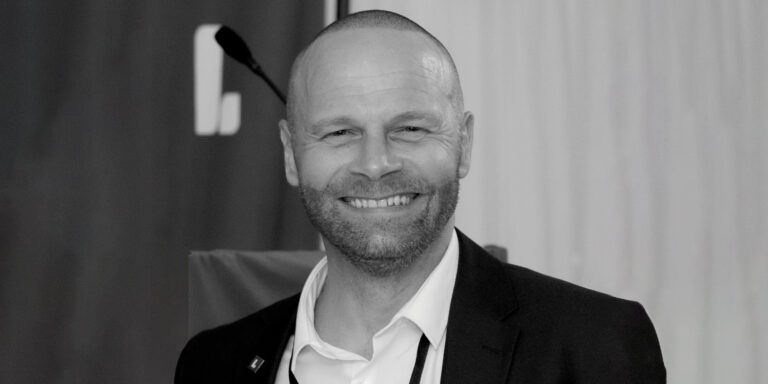As a buzzword, authenticity has been admirably successful. Google Scholar returns more than five million academic articles on the subject and Amazon more than a thousand book titles. Yet, for all the hype, the idea is frustratingly vague. Ask 10 people what it means and you’ll get 10 different answers. The general gist, though, is that an authentic leader is self-aware, true to themselves and honest. The idea is that this is good for business because it fosters trust and motivation, which, in turn, boosts performance.
Whether authenticity is genuinely valuable or just another leadership fad is debatable, but the fact that it’s become a thing at all says something telling about the state of modern organisations.
A basic tension
Authentic leadership gained prominence in the early 2000s, but its roots lie much further back in time. Ancient Greek philosophers extolled the benefits of living according to one’s nature, while more recent existential philosophers talked of the need to be authentic to your beliefs in a world that pushes people to conform. Then, in the 1970s, as organisations grew increasingly complex and bureaucratic, some commentators began to describe management as dehumanising and called for a more personal, less mechanistic approach to leadership.
The common thread to all these was the idea of ‘being yourself’. It’s the reason authenticity has caught people’s imagination and become so popular. It speaks to a very real and basic tension that exists at the heart of most work: the fact that you can’t just be yourself in the workplace. At least not entirely, because being professional involves some degree of self-restraint and, therefore, some element of inauthenticity.
“The very nature of your role as a leader requires you to often be inauthentic and it is this tension that the authenticity movement has tapped into so successfully”
This is especially so for leaders, because they have extra responsibilities. Not just in terms of having to tell people what to do and sometimes having to tell them to do things better, but also in terms of helping to motivate people, keeping others positive and shielding teams from stress. That means, if you’re a manager and you’re having a bad day, you have a responsibility to not be wholly authentic, to at least partly shield your people from your stress. So, the very nature of your role as a leader requires you to often be inauthentic and it is this tension that the authenticity movement has tapped into so successfully.
To be clear, this basic authenticity tension isn’t organisations’ fault – it’s just a natural part of being a leader. But that doesn’t mean firms are blameless, because there is a growing trend for them to accidentally make the situation much worse.
Over-spin
Over the past five years, a new trend has emerged in academic research – the study of corporate BS; how organisations will spin a story that tries to cover bad news as good news to their employees.
Here’s a real-life example: a firm beginning a restructuring process that will result in job losses positions it to employees in an upbeat, positive manner and talks about it as an opportunity – a communication that many of the employees experience as inauthentic, and that managers and leaders are stuck having to defend.
“This is the source of what academics call corporate BS, and what is creating an all-new and entirely artificial source of inauthenticity for leaders”
It is far from an isolated example. As a rapidly growing trend within organisations, it is an extension of a much broader global societal trend for people to focus on impression management. You see it in social media, and how people invest in personal branding and hunting for likes; you see it in political leaders, in how they seek to control the narrative and manage their image; and you see it in organisations, in how they try to manage their brand internally and externally, controlling the messaging to employees just as much as to customers.
This is the source of what academics call corporate BS, and what is creating an all-new and entirely artificial source of inauthenticity for leaders. The fact that they are having to repeatedly defend inauthentic and sometimes plainly false corporate communications, and to bridge the gap between the narratives that organisations want their employees to believe and the realities that employees actually experience.
A new authenticity crisis
For the past 100 years, commentators have lamented the mechanistic nature of leadership, complaining that it forces leaders to be something they aren’t – but, in many respects, this criticism has been unfair. It has not so much been organisations forcing leaders to be inauthentic, as leaders themselves feeling a responsibility to behave in a certain way and shield their people to a certain degree. So organisations’ culpability has been debatable. Not any more, though.
The growing focus on internal communications and branding, while creating new fields of interest for academics, is building a fresh and very real crisis in authenticity for leaders, increasingly placing them in impossible positions. And this is a crisis that can’t be solved by sending leaders on an authenticity course. It isn’t one that can be worked around with slicker messaging or a cleverer piece of internal branding.
There’s only one solution, and it’s not that leaders need to be more authentic – it’s that organisations do.
Nik Kinley is a London-based leadership consultant, assessor and coach with 40 years’ experience working with some of the world’s biggest companies. An award-winning author, he has written eight books, the latest of which is The Power Trap: How Leadership Changes People and What to Do About It.
This article is adapted from an article that first appeared in the autumn 2025 issue of Edge.





